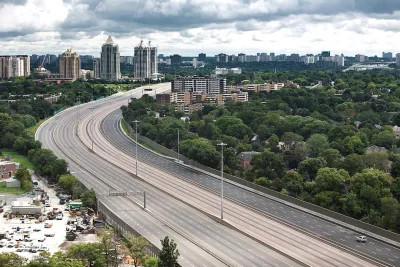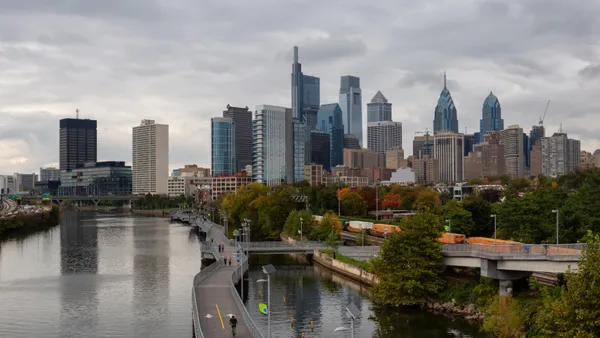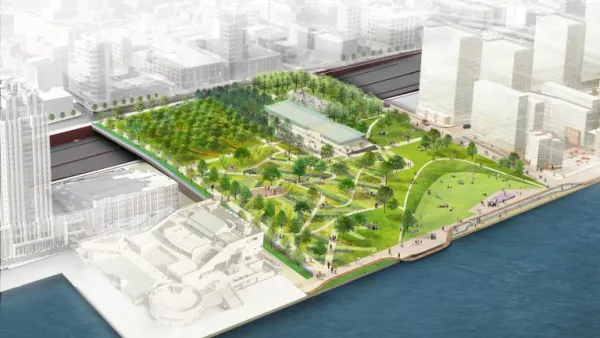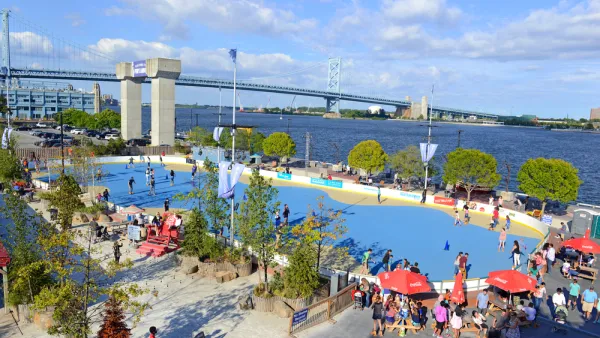Several highway-widening projects on the East Coast were approved under the pretense of expected growth in traffic totals. Now planners are scrambling to figure out the new normal.

“Highway planners misjudged the future because the Great Recession reduced both commercial and passenger travel, and because of an unexpected drop in driving by young adults,” writes Paul Nussbaum.
The article includes a lengthy list of highway projects that moved forward based on projections that now look anything but clairvoyant.
- For the $2.5 billion project to widen the New Jersey Turnpike, the planners estimated that northbound traffic volume would increase by nearly 68 percent above 2005 levels and southbound traffic would increase by 92 percent by 2032. Quite the opposite trend has taken place: “Now, one-third of the way through that 27-year forecast, turnpike traffic is actually about 10 percent lower than it was in 2005.”
- “In 2007, the Pennsylvania Turnpike Commission assumed that traffic would grow 3 percent to 5 percent every year to help pay for debt as it took on a new obligation to contribute up to $900 million a year to fix other roads around the state.” Instead, “traffic has been essentially flat.”
- “And when the Delaware River Joint Toll Bridge Commission decided in 2003 to replace the 50-year-old, four-lane Scudder Falls Bridge on I-95 with a $328 million, nine-lane, 180-foot-wide toll bridge, it assumed that traffic would increase 35 percent by 2030.” Rather, “bridge traffic has declined slightly and is now below the levels of 2002.”
- The Schuylkill Expressway and Interstates 95 and 476 have also experienced reductions in traffic over the last six years.
FULL STORY: Drop in traffic on area highways forces review of plans

Analysis: Cybertruck Fatality Rate Far Exceeds That of Ford Pinto
The Tesla Cybertruck was recalled seven times last year.

National Parks Layoffs Will Cause Communities to Lose Billions
Thousands of essential park workers were laid off this week, just before the busy spring break season.

Retro-silient?: America’s First “Eco-burb,” The Woodlands Turns 50
A master-planned community north of Houston offers lessons on green infrastructure and resilient design, but falls short of its founder’s lofty affordability and walkability goals.

Test News Post 1
This is a summary

Analysis: Cybertruck Fatality Rate Far Exceeds That of Ford Pinto
The Tesla Cybertruck was recalled seven times last year.

Test News Headline 46
Test for the image on the front page.
Urban Design for Planners 1: Software Tools
This six-course series explores essential urban design concepts using open source software and equips planners with the tools they need to participate fully in the urban design process.
Planning for Universal Design
Learn the tools for implementing Universal Design in planning regulations.
EMC Planning Group, Inc.
Planetizen
Planetizen
Mpact (formerly Rail~Volution)
Great Falls Development Authority, Inc.
HUDs Office of Policy Development and Research
NYU Wagner Graduate School of Public Service




























